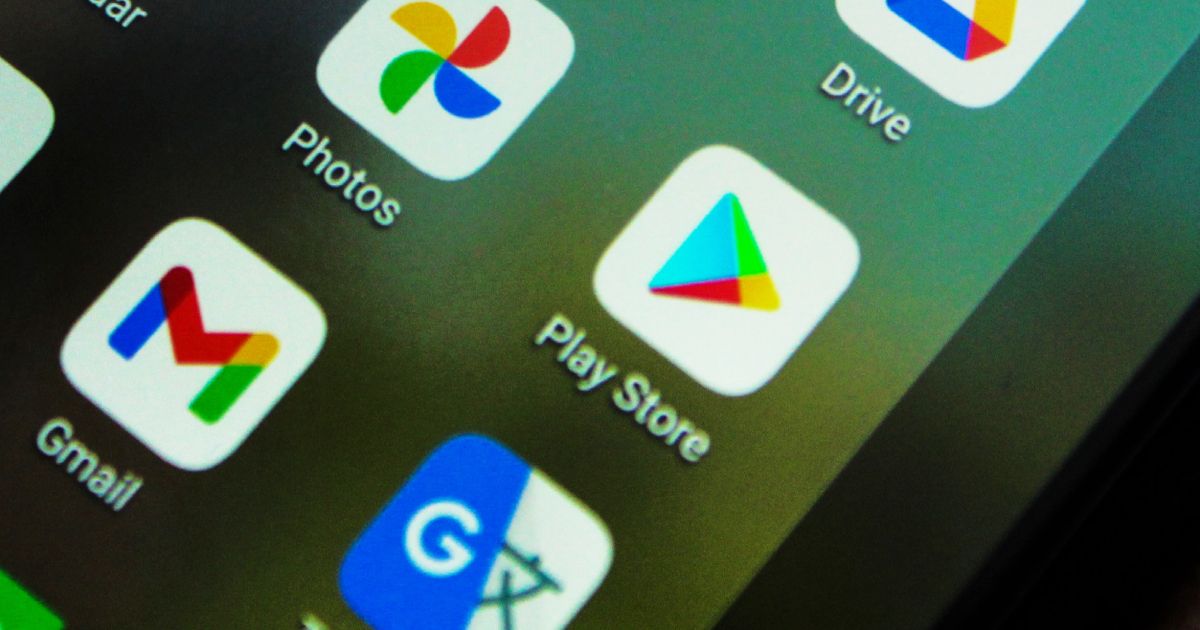Why is App Store Optimization (ASO) Important?

In the ever-expanding digital ecosystem, where millions of mobile apps vie for user attention, visibility and discoverability are the keys to success. This is where App Store Optimization (ASO) comes into play. ASO is a multifaceted strategy that is instrumental in making your mobile app more discoverable, driving organic downloads, and ultimately improving your app's success.
In this article, we'll delve into the world of ASO, understanding what it is and why it holds immense importance for mobile apps.
What is ASO?
App Store Optimization (ASO) functions as the digital compass guiding your mobile app's journey through the competitive app landscape. Much like Search Engine Optimization (SEO) for websites, ASO is the strategic process of fine-tuning various facets of your app to elevate its visibility in app stores' search results. Within this dynamic arena, several crucial components come into play, including meticulous keyword optimization, the curation of creative assets such as app icons and engaging screenshots, management of user reviews, and the cultivation of high ratings. Each of these elements plays a vital role in the delicate art and precise science of ensuring your app not only stands out but thrives amidst the diverse array of applications vying for user attention.
In essence, ASO is the catalyst for app discoverability and user engagement. By optimizing these key factors, it paves the way for potential users to find your app when searching for specific keywords or browsing relevant categories. However, ASO doesn't just end at increasing visibility; it extends into the realm of conversion optimization. In the digital age, the first impression is often the app's icon, and it's further solidified by compelling screenshots and descriptions. ASO strategically crafts this initial encounter to ensure users are not only enticed to click 'download' but also compelled to explore and engage with the app's features and functionalities. It's the synergy of these elements that forms the backbone of ASO, making it an indispensable tool for app developers in the pursuit of digital success.
The Benefits of ASO

Why is ASO so integral to your mobile app's success? In the increasingly competitive world of mobile applications, App Store Optimization (ASO) plays a pivotal role by significantly enhancing your app's visibility and discoverability.
By understanding and harnessing these primary benefits below, you can not only attract more users but also improve the overall performance and credibility of your mobile application.
- Enhanced Visibility: With millions of apps available in major app stores, standing out in the crowd can be challenging. ASO helps you improve your app's visibility within search results, ensuring that it's more likely to be found by users searching for relevant keywords.
- Improved Conversion Rates: ASO isn't just about getting more eyes on your app; it's also about getting more users to click that 'download' button. By optimizing your app's creative assets, such as its icon, screenshots, and descriptions, you can significantly boost conversion rates.
- Organic Growth: The downloads and users acquired through ASO are often organic, meaning they are not the result of paid advertising. These organic users tend to be more engaged and valuable over the long term, as they discovered your app through their own search, reflecting genuine interest.
- Cost-Effective: Compared to paid user acquisition strategies, ASO is a cost-effective approach to growing your app's user base. While it may require time and effort, the long-term benefits often outweigh the initial investment.
- Competitive Edge: ASO can give your app a competitive advantage. By outranking and outshining your competitors in search results, you position your app for success in a highly competitive marketplace.
How is ASO different for the Apple App Store and Google Play Store?

- Keyword Placement: In the Apple App Store, keyword placement is crucial in the app's title and subtitle. Apple's algorithm gives more weight to keywords in these fields. In contrast, the Google Play Store relies on the app's description and user reviews for keyword ranking, allowing for a more flexible approach in the app's title.
- Character Limits: Apple imposes character limits for app titles and subtitles, which can be more restrictive. Google Play, on the other hand, provides more room for creativity and keyword inclusion in the title and description.
- Visual Elements: Visual assets, such as app icons and screenshots, are essential in both app stores. However, Apple's App Store prioritizes visual appeal and simplicity in design, while Google Play places emphasis on screenshots that convey the app's functionality and features.
- Ratings and Reviews: User ratings and reviews are important in both stores, but they are weighted differently. The Apple App Store considers recent ratings and reviews more heavily, while Google Play takes a holistic view of an app's overall rating and reviews.
- Conversion Rate Optimization: Optimizing for conversion rates is critical in the Apple App Store due to the limited number of characters in titles and subtitles. Google Play allows more flexibility in title and description, allowing for more comprehensive explanations that can influence conversions.
- Localization: Google Play's algorithm takes localization into account more effectively. Translating your app's description, keywords, and user reviews into various languages can boost its visibility in international markets.
- Algorithm Updates: Both stores periodically update their algorithms, so staying informed about these changes is essential for ongoing ASO success. While the core principles of ASO are consistent, understanding the differences between the platforms is vital for tailoring your strategy to each store effectively.
Top Ranking Factors for Apple App Store

- Keyword Relevance: The use of relevant and strategically placed keywords in your app's title, subtitle, and keyword field is a critical factor. The better your keywords match what users are searching for, the higher your app is likely to rank.
- User Ratings and Reviews: The quality and quantity of user ratings and reviews have a significant impact on an app's ranking. Apps with higher ratings and more positive reviews tend to rank better. Additionally, recent ratings and reviews are given more weight.
- App Download Volume: The number of downloads an app receives can influence its ranking. Popular apps with a high download volume are often rewarded with better visibility.
- App Usage and Retention: The level of user engagement, such as the frequency of app usage and the duration of use, can also affect ranking. Apps that users return to regularly and spend more time in are typically favored.
- App Updates and Maintenance: Keeping your app up to date with regular updates and improvements can positively impact its ranking. Apple values apps that are actively maintained and developed.
Top Ranking Factors for Google Play Store

- App Quality and Performance: Google places a strong emphasis on app quality and performance. Apps that are stable, free from crashes, and have a low error rate are more likely to rank higher. Regular updates to fix bugs and improve performance are also favored.
- User Ratings and Reviews: User ratings and reviews play a significant role in an app's ranking on Google Play. Apps with higher ratings and positive reviews tend to rank better. The number of downloads and the engagement of users who leave reviews are also considered.
- Keyword Relevance: The use of relevant keywords in the app's title and description is important. Google Play takes keyword relevance into account when determining which apps to display in search results. Effective use of keywords can improve visibility.
- App Engagement and Retention: The level of user engagement, including factors like the number of daily and monthly active users, session duration, and user retention rates, can influence an app's ranking. Apps that users engage with regularly are more likely to rank higher.
- App Metadata and Visuals: The information and visuals associated with the app, such as the app icon, screenshots, and video previews, also matter. An eye-catching icon, informative screenshots, and an engaging video can help attract users and positively impact rankings.
How to Get Started with ASO

- Keyword Research: Conduct thorough keyword research to identify the most relevant and high-traffic keywords for your app. Use ASO tools to find keywords that align with your app's core features and audience.
- Optimize App Title and Subtitle: The app title is one of the most critical elements for ASO. Include primary keywords in the title and subtitle while keeping it concise and compelling.
- App Description: Write a detailed and informative app description that incorporates keywords naturally. Explain the app's features, benefits, and unique selling points to attract potential users.
- Visual Assets: Create captivating visual assets, including app icons, screenshots, and video previews. These visuals should effectively showcase your app's functionality and benefits.
- User Ratings and Reviews: Encourage users to leave positive reviews and ratings. Respond to user feedback, address issues, and improve app quality based on user suggestions.
- App Updates: Regularly update your app to fix bugs, add new features, and enhance performance. Google Play and the App Store often favor apps that are actively maintained.
- Localization: Translate your app's content, including the title, description, and keywords, into different languages to expand your global reach.
- App Category and Genre: Choose the most appropriate category and genre for your app, as this affects where it appears in app store rankings.
- App Preview Video: Create an engaging app preview video that highlights key features and functionality. Use this video to give users a visual demonstration of your app.
- Deep Linking: Implement deep linking to enable users to access specific content or features within your app directly from search engine results.
- Social Proof: Leverage social proof by showcasing awards, recognition, or media coverage your app has received. This can instill trust and confidence in potential users.
- App Engagement: Focus on improving user engagement and retention within your app. The longer users stay engaged with your app, the more favorably it's likely to be ranked.
- Competitor Analysis: Analyze and monitor your competitors' ASO strategies. Understanding what works for them can help you refine your own approach.
- A/B Testing: Continuously test different elements of your app listing, such as visuals, titles, and descriptions, to see which versions perform better.
- Regular Monitoring: Regularly monitor your app's performance and make adjustments to your ASO strategy as needed. App store algorithms can change, so staying informed is essential.
Top ASO Tools
- Data AI: Data AI (formerly App Annie) is a widely recognized ASO tool that provides a wealth of data and insights. It allows you to track app store rankings, keywords, and user reviews. It also offers competitive analysis, helping you benchmark your app's performance against others.
- Sensor Tower: Sensor Tower is a comprehensive ASO platform that provides data on app rankings, keyword research, and advertising insights. It's well-regarded for its competitive analysis and allows you to make data-driven decisions to improve your app's visibility and performance.
- Mobile Action: Mobile Action is known for its user-friendly interface and robust ASO features. It offers keyword tracking, app store optimization recommendations, and competitive intelligence. It's a great tool for app developers looking to improve their app's rankings.
- App Radar: App Radar is an ASO tool that helps you find the right keywords, optimize your app's listing, and track your rankings. It offers features like keyword suggestions, competitor analysis, and app store analytics.
- AppFollow: AppFollow focuses on managing user reviews and feedback, helping you engage with your app's users effectively. It also offers ASO features, including keyword tracking and competitive analysis.
Final Thoughts
In a nutshell, App Store Optimization is your secret weapon for making your mobile app visible, enticing, and successful in the competitive app landscape.
Whether you're launching a new app or seeking to breathe new life into an existing one, ASO should be a crucial part of your mobile app marketing strategy. It's the driving force that ensures your app gets the attention and downloads it deserves, ultimately contributing to your app's success and your business's growth.





